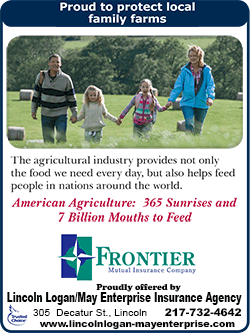|
 "She told me, 'If something happens to my brother, I want to save
him,'" said Stepp, an anti-drug activist in northern Kentucky's
Bullitt County who on Saturday organized a training session in the
town of Hillview for about 50 adults and children on the use of
naloxone, which is given as a shot or nasal spray. "She told me, 'If something happens to my brother, I want to save
him,'" said Stepp, an anti-drug activist in northern Kentucky's
Bullitt County who on Saturday organized a training session in the
town of Hillview for about 50 adults and children on the use of
naloxone, which is given as a shot or nasal spray.
With the United States experiencing a worrisome rise in overdose
deaths from opiate drugs including heroin, morphine and prescription
painkillers such as OxyContin, Stepp argues naloxone should become
as common as the EpiPen shot for certain life-threatening allergies.
Stepp is part of a national push by some health advocates to put
naloxone, also known by the brand name Narcan, into the hands of not
only paramedics, police and pharmacists but also addicts' relatives
to try to prevent deaths from opiate drugs.
People ensnared in America's opiate epidemic are primarily white,
with many from rural or small-town settings like in Bullitt County
although many others can be found in affluent suburbs.

Such overdoses killed 23,150 people in the United States in 2013,
the most recent year for which national figures were available,
according to the U.S. Centers for Disease Control and Prevention,
while deaths from heroin alone quadrupled to 8,257 that year
compared to the 2,080 a decade earlier.
Naloxone counteracts the effects of opiate drugs on brain receptors
that can lead to slowing respiration, coma and death during an
overdose, restoring normal breathing within minutes.
The lack of wide availability makes it important for families with
people who use opiates, legally or illegally, to secure their own
naloxone supply, Stepp said.
When people call a 911 emergency line to report an overdose, she
said, police usually arrive first, before medical personnel. Often
they do not have the drug, though many departments have started
training officers in naloxone use.
"While you're waiting for the ambulance the person you're worried
about is not getting enough oxygen," Stepp said. "Seconds count."
She said her son recently completed drug rehab treatment, a
vulnerable time for overdoses.
DOES NALOXONE ENCOURAGE ABUSE?
Critics contend naloxone may encourage drug abuse by reducing the
risks.
Karyn Hascal, president of The Healing Place, a drug treatment
center in Louisville, Kentucky, is conflicted on the issue. Hascal
said first responders should have naloxone and be trained to use it,
but worries that users could become too "laid back" if they think
they can always be revived. Hascal said users need to know they must
seek treatment.
[to top of second column] |

One potential barrier to broader naloxone access is its cost: about
$80 per dose for the nasal spray, $40 for the shot.
As of September, 43 of the 50 states, as well as Washington, D.C.,
had laws to increase layperson access to naloxone, but they are a
patchwork and ease of access varies, according to a report by Corey
Davis and Derek Carr of the St. Paul, Minnesota-based Network for
Public Health Law, which provides legal assistance and training on
public health issues.
For example, Ohio provides broad civil and criminal immunity to
providers of naloxone, while Iowa does not.
The New York-based Harm Reduction Coalition, an advocacy group on
drug-use issues, said it knows of no lawsuits or prosecutions over
dispensing naloxone, but the liability threat acts as a "symbolic
barrier" to some doctors, according to Daniel Raymond, the group's
policy director.
There is also a lack of awareness. Many people who have opiate users
in their families do not know about naloxone even though it has been
around since 1971, Raymond said.
Hascal said she agrees some families might need naloxone, but
expressed concern about training children to administer it,
wondering about the effect on a child if a revival attempt fails.
"That should be done by a first responder," Hascal said.

Daniel Bigg of the Chicago Recovery Alliance, which since the 1990s
has trained people to use naloxone, said the stigma about drug abuse
is one of the biggest challenges to both overdose prevention and
addiction treatment.
"We use a toxic mix of moralizing and stigmatizing," Bigg said of
Americans. "It silences the exchange of views, and it kills."
(Reporting by Mary Wisniewski in Chicago; Editing by Daniel Wallis,
Ben Klayman and Will Dunham)
[© 2015 Thomson Reuters. All rights
reserved.] Copyright 2015 Reuters. All rights reserved. This material may not be published,
broadcast, rewritten or redistributed. |